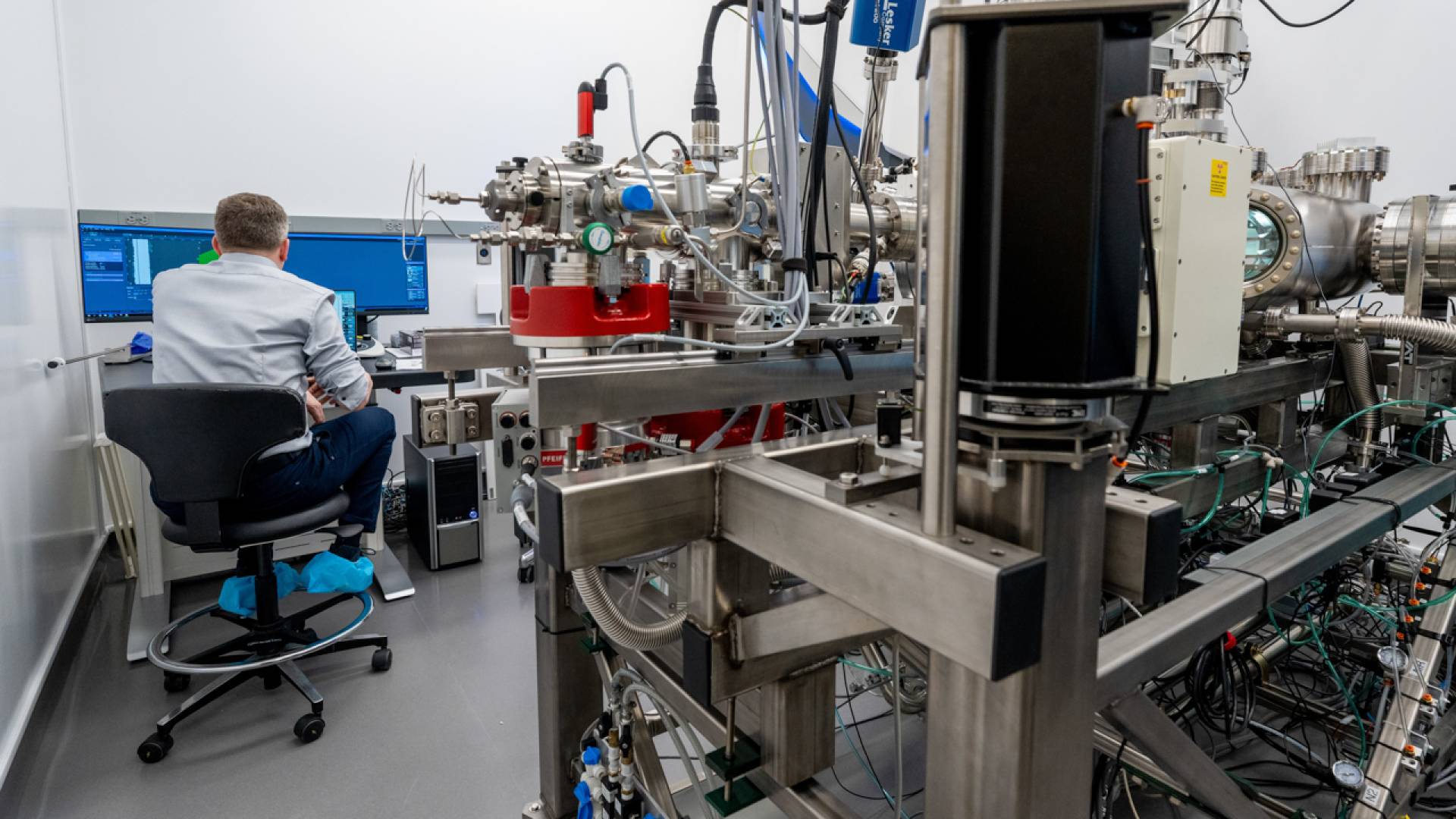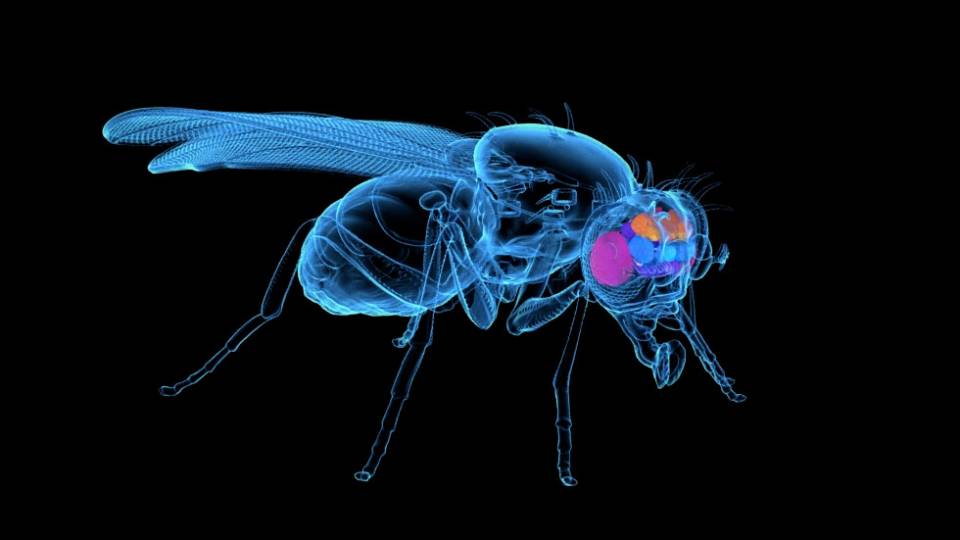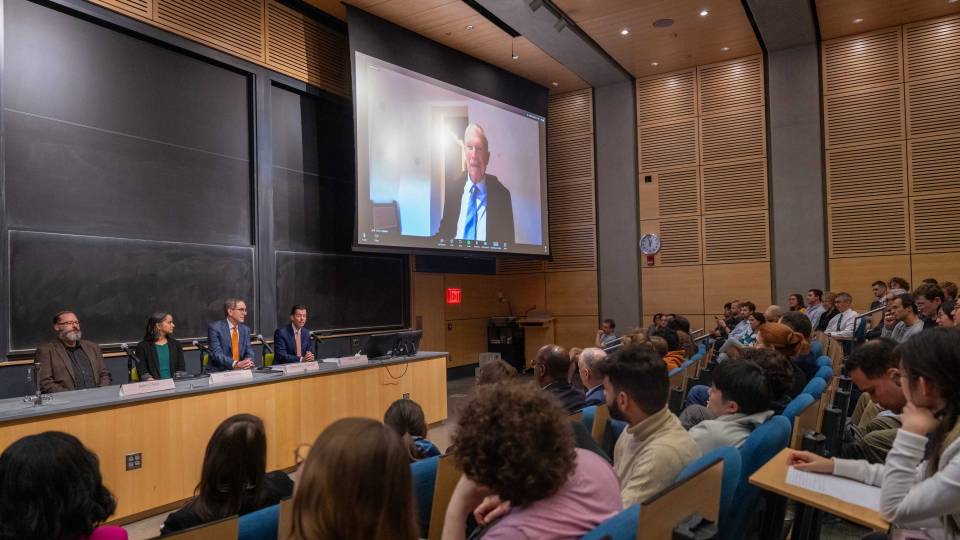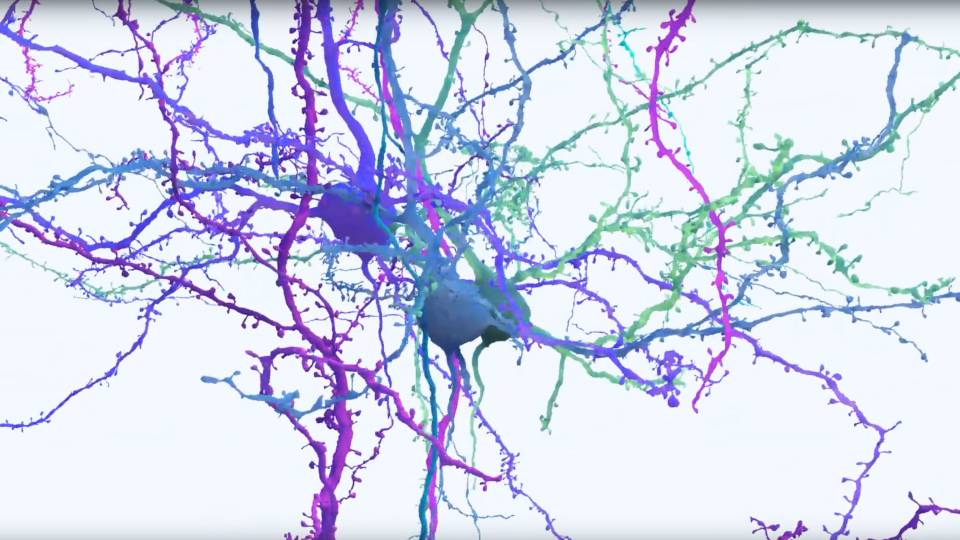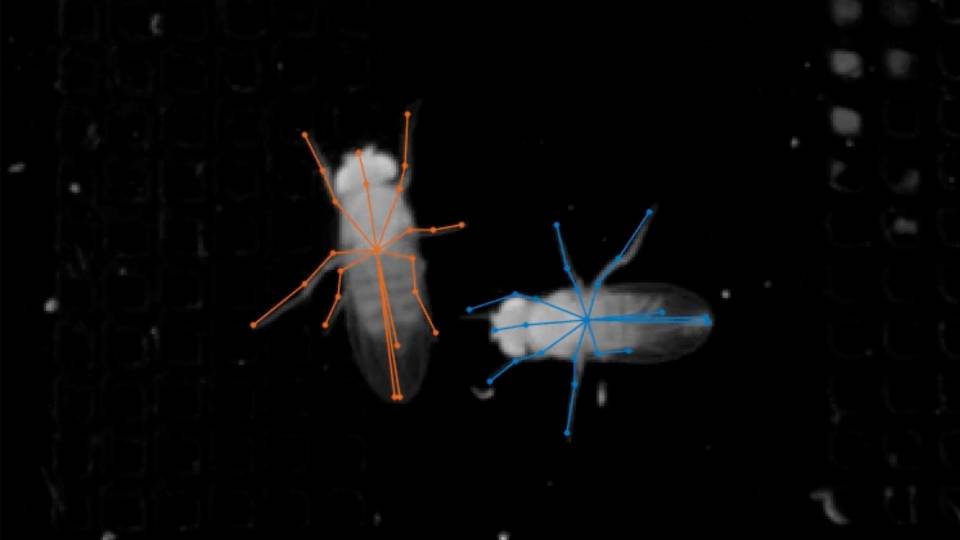A researcher (left) examines data from the world’s fastest multibeam scanning electron microscope (mSEM, right); Princeton has one of only three mSEMs in the world that are integrated with ion milling systems. The instrument received substantial BRAIN Initiative funding from the National Institutes of Health, along with University support.
John Ngai, director of the U.S. National Institutes of Health’s BRAIN Initiative, and U.S. Rep. Bonnie Watson Coleman visited in May with Princeton Neuroscience Institute (PNI) researchers to discuss recent advances toward understanding the fundamental workings of the brain.
Ngai and Watson Coleman toured several major research sites, starting with side-by-side fMRI labs where researchers are using artificial intelligence models to understand activity for perception and communication within the human brain. Researchers also demonstrated real-time neural imaging in fruit flies, which has significant implications for understanding human decision-making, and projects studying reward learning and the brain.
Ngai and Watson Coleman met with some of PNI’s leading faculty researchers, including PNI Director Mala Murthy(Link is external), Jonathan Cohen(Link is external), David Tank(Link is external), Sebastian Seung(Link is external) and PNI’s newest arrival, Bradley Dickerson(Link is external).
Among other topics, they discussed the vital role of artificial intelligence in processing the massive volumes of data that the new imaging technology makes available. Studies of the brain are also informing the development of improved neural networks. “Among the outstanding work that’s being done at Princeton are the BRAIN Initiative-funded projects focusing on the interface between theory, data science, computer science and artificial intelligence,” said Ngai.
Murthy(Link is external), the Karol and Marnie Marcin ’96 Professor of Neuroscience, called the BRAIN Initiative “absolutely vital to many of the groundbreaking discoveries and new technologies developed at Princeton over the past ten years, including new methods for quantifying behavior, and measuring and manipulating neural activity.” New projects include ambitious brain mapping efforts “to understand how the circuitry of the brain gives rise to thoughts, perceptions and actions, and how defects in circuitry could lead to disease,” she said.
[Note: The May 30 visit was a non-campaign event and Princeton University does not endorse, support or oppose any candidates in any upcoming election.]

John Ngai, director of the National Institutes of Health BRAIN Initiative (left) talks with U.S. Rep. Bonnie Watson Coleman (right, in pink) as Princeton’s Mala Murthy (center), Stephan Thiberge (rear) and others look on.
“The brain is literally the most complex device in the known universe,” Cohen said during the visit. “There are on the order of 100 trillion connections in your head, which is just a mind-blowing number, and we’re in the job of trying to reverse engineer it, to figure out how it all works.”
A highlight of the tour was visiting the world’s fastest multibeam scanning electron microscope (mSEM); Princeton has one of just three mSEMs integrated with ion milling systems (IBEAM) in the world. Ngai and Watson Coleman spoke with Tank, the former co-head of PNI, who has used his sabbatical this year to design and build the instrument, with the goal of imaging the neural wiring diagram (“connectome”) of a 10 cubic millimeter volume of a mouse brain over the next four years. The resulting dataset will be 10 times bigger than any previous connectomics dataset, and it will serve as a proof of principle that the approach can be scaled up to produce the connectome of a whole mouse brain.
The IBEAM approach was invented and developed by a team led by Princetonalum Harald Hess, a 1982 Ph.D. graduate in physics who is now a researcher at the Janelia Research Campus of the Howard Hughes Medical Institute.
Ngai was particularly appreciative of the fundamental research Princeton scientists are pursuing into building a comprehensive understanding of the brain, including creating the revolutionary instruments that make new discoveries possible. “If you look at the progress in science and medicine, we make these big discoveries and then we hit a wall, because we don’t have the tools to proceed,” said Ngai, who has led the Brain Research Through Advancing Innovative Neurotechnologies Initiative, or the BRAIN(Link is external) Initiative, since May 2020.
Ngai explained that with neural diseases like Alzheimer’s and dementia, doctors are currently limited to treating the symptoms instead of curing the diseases, because we still don’t understand the brain mechanisms well enough to tackle the diseases at their root. “That’s why we’re so happy to be funding projects, such as those at Princeton, to enable researchers to build the tools that are going to bring these discoveries closer to cures,” Ngai said.
Ngai was a renowned neuroscientist before coming to the NIH BRAIN Initiative, having taught for 27 years at the University of California-Berkeley, where he was the Coates Family Professor of Neuroscience. Watson Coleman has represented this area for almost three decades, serving in the New Jersey General Assembly from 1998 to 2015 before winning her seat in the U.S. House of Representatives in 2015. As a member of the appropriations committee, she helps prioritize health funding. “It’s so important to understand all of the functions of the brain so that someday we can cure diseases of the brain instead of just treating the symptoms,” she said.
